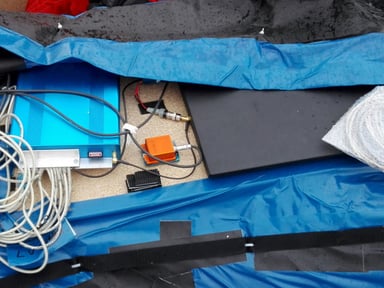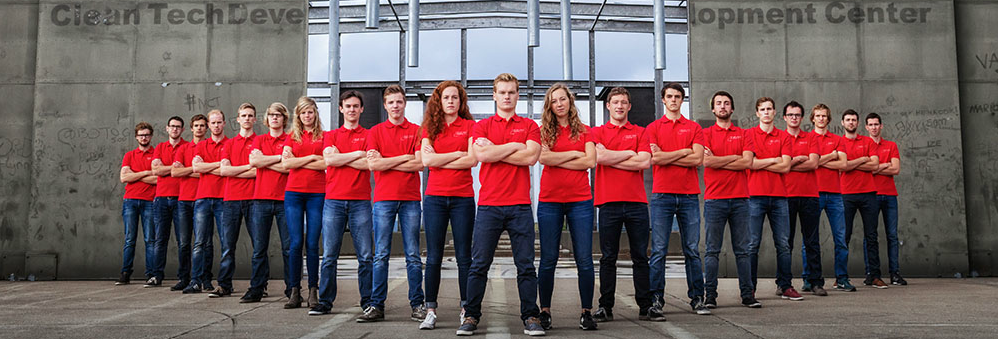"Thanks to the Xsens MTi-G-710 sensor, the solar car can be used exactly as intended."
Background
Solar Team Twente is a group of 20 students, both from Saxion University and University of Twente, participating in the World Solar Challenge for the 7th time. The challenge is to design and construct a solar vehicle capable of racing 3000 kilometers through the scorching outback of Australia. Our main focuses are aerodynamics, electrical efficiency and total mass.
Data-Acquisition
Data acquisition consists of measuring, sending and storing of data from different sensors. This ranges from a stand-alone weather station on the roof of the workshop, the different locations and speeds of the convoy cars, till the 385 different sensors and measurements of the solar car. The work of the data-acquisition unit begins with the mock-up. The test vehicle is completely packed with sensors to measure the load on the various components under extreme conditions. The solar car of Solar Team Twente is structurally very precise. It is important to have properly tested the car under all load cases so it functions as it is calculated. These load cases come forth again out of power calculations for different situations, such as driving over a cattle grid. All these calculations are verified by means of tests.
Strategy
Strategy consists of the most efficient and fastest way to drive from start to finish, with the aim to have the battery empty on arrival. Our strategy specialist works half a year to write software that can help him make choices. The software uses the real-time values of the solar car, the weather car and weather maps. During the race the strategist and data acquisition unit work together closely. The strategist must constantly know how much energy the solar panel, and how much energy the car has. The strategist can calculate a new speed from this at any time. This then sends the data acquisition unit to the solar car.
Xsens in the solar car
The Xsens sensor is one of the most important measurement devices that is used in the design and manufacturing of the car. The solar team uses the MTi-G-710, a high-quality sensor for measuring vibration, among other things, acceleration and angular rotation. In combination with other measuring equipment, we can use this to calculate the force on our suspension, which in turn is used to verify that the car is structurally sound. This way we try to interpret the transition from theory to practice and verify it. This enables us to make high jumps to lift the car to a higher level. For example, we use the MTi-G-710 first in our mock-up in order to go back to the drawing board. Some components or systems react differently in practice. Thanks to these data, we can then customize this to apply an improvement.
If the car is produced it is strategically important to gain as much knowledge as possible about the car. We gain much information from driving the car, and the Xsens data in combination with other information of the car is then parameterized. This means that we know exactly what the energy income and expenses are at any speed in any situation. Thanks to the Xsens MTi-G-710 sensor, the solar car can be used exactly as intended.